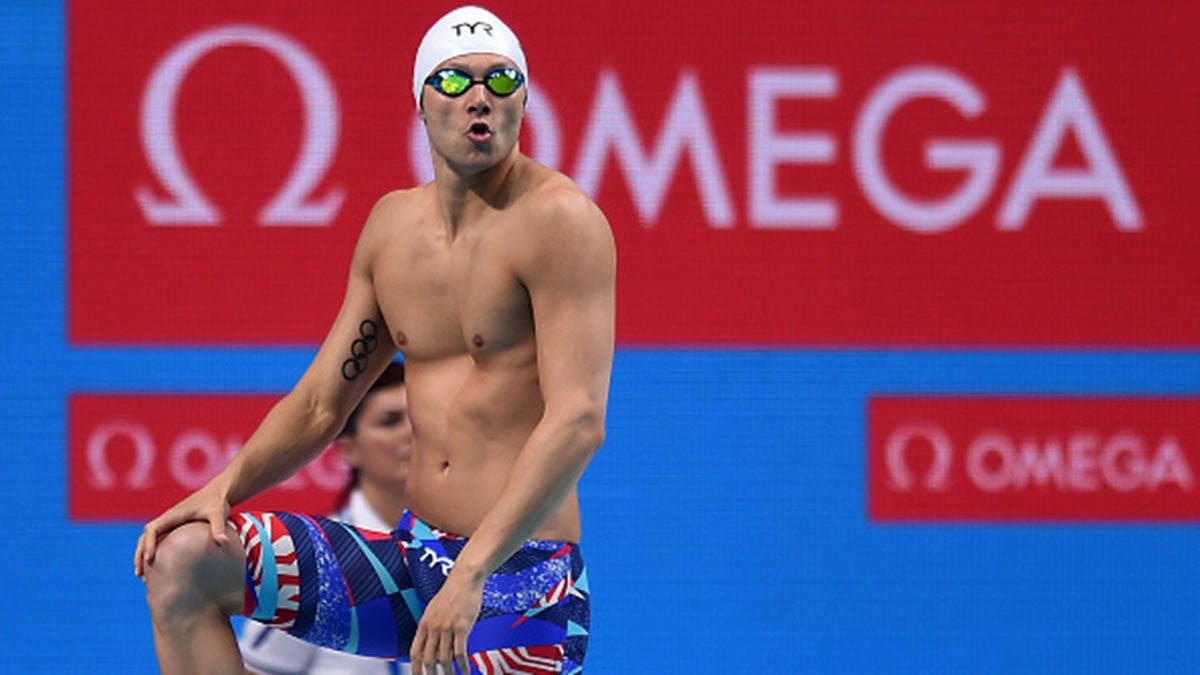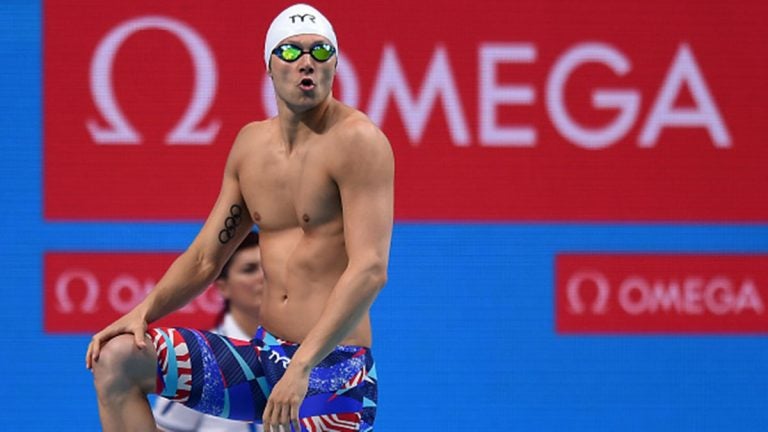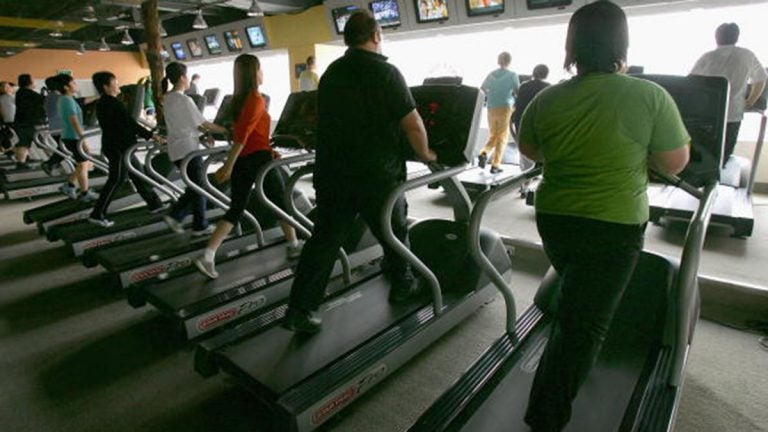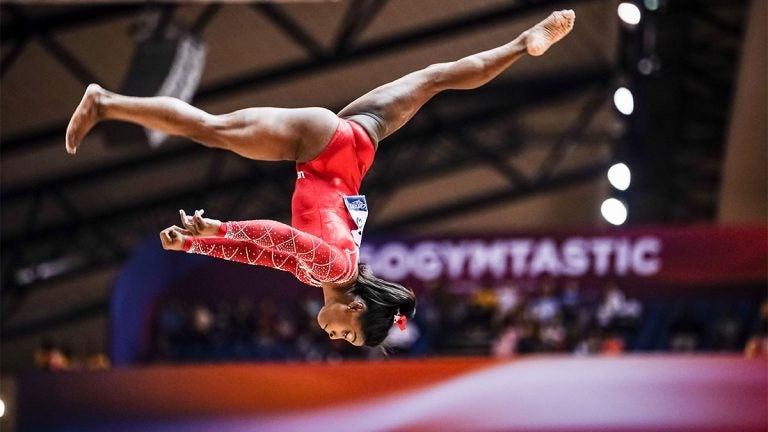Body image issues can impact athletes at a young age
Why this matters
Body image issues are not unusual in athletes and can start at a young age. Negative consequences of poor body image include quitting sports, eating disorders, and low self esteem.
As a teenager during swim meets, Cody Miller remained fully clothed every time he walked to the starting blocks. Miller agonized over removing his shirt, when the inevitable whispers, pointing, laughs and stares would begin. He would not strip down to his swimsuit until his race was about to start.
It wasn’t until his body hit the water that he felt at ease.
Miller, a 2016 Olympic gold and bronze medalist, has pectus excavatum, a congenital deformity in which the sternum grows inward, causing the middle of the chest to be caved in. Miller’s condition was barely noticeable until he was 12 or 13 years old, because pectus excavatum grows more severe during adolescence. His chest stopped sinking when he was done growing, and his life was never threatened, but his deformity damaged his self-worth.
Miller knew he would never have the perfect, athletic chest that many young men strive to have.
“That took a long time for me to get over,” he said. “I was really self-conscious about it. I remember being in gym class and not wanting to change because I didn’t want people to see me.”
Even when he could hide his chest, Miller still felt insecure.
“Just being able to hide it isn’t enough because there’s always that lingering thought in the back of your head,” he said. “If you’re actually hiding something, it’s affecting you, regardless of whether or not you are effectively hiding it.”
Body image issues are not unusual for athletes. Even elite athletes with bodies that the general population would love to have can have poor body image. Athletes across all levels and sports are speaking up. British sprinter and Olympic medalist Anyika Onuora has spoken out about hiding her larger hips and buttocks under baggy clothes because people called her fat when she was young. Marathoner Allie Kieffer has written and spoken about her unhealthy attempts to lose weight and how running at her natural weight has made her a better runner. More male athletes are sharing their stories as well. Olympic figure skater Adam Rippon has described the pressure he felt to look thinner, and football players and runners have explained how their body image issues led to eating disorders.
Erin Rubenking, associate director and clinical care coordinator for the University of Colorado Athletic Department’s Psychological Health and Performance program, says athletes face pressure to meet expectations of what they should look like.
“Body image varies by sport and even by position within some sports. There are different expectations of what a basketball player looks like, what a lacrosse player looks like, what a runner looks like,” Rubenking said. “I think a lot of the time, we’re not looking at the talent of the athlete.”
Rubenking said focusing on body type rather than talent may cause some talented young athletes to drop out of sports because they don’t believe they have the right body type. She also said athletes who continue in sports can still internalize negative body image, and that could affect their performance.
“There’s a lot of pressure in general with athletes on their bodies. There is so much focus on what they are eating and what their fitness level is that they are hyper vigilant about their bodies.” Rubenking said. “I think it is natural that they would develop more body image issues than someone in the general public who isn’t constantly focusing on what their body can do.”
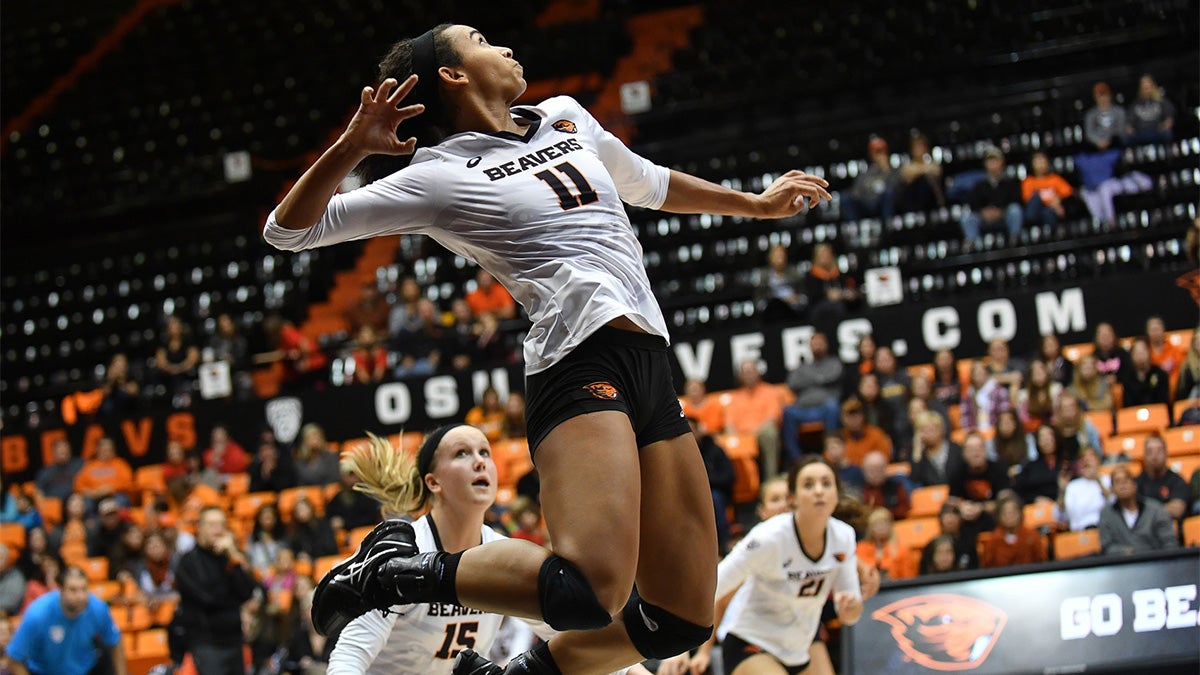
Oregon State's Lanesha Reagan started playing volleyball in fifth grade. Her powerful thighs gave her a vertical leap that allowed her to excel on the volleyball court, but her thighs also led to a poor body image beginning in seventh grade. Wearing spandex shorts and a tight jersey only made her body image issues worse.
“Being a teenage girl, you have body image issues,” Reagan said, “but I felt like mine were definitely heightened, and I just couldn’t stop thinking about what I looked like all the time.”
Reagan could not hide her body because of the revealing clothing she had to wear, just as Miller could not hide his chest at swim meets.
Revealing and form-fitting uniforms may be necessary in a sport like swimming, but Rubenking said sports should allow more clothing options when the uniform does not serve a performance-increasing function. “If they’re already self-conscious about some imperfection, it’s just going to amplify when they are being told to wear more revealing things,” she said.
“There’s a lot of pressure in general with athletes on their bodies. There is so much focus on what they are eating and what their fitness level is that they are hyper vigilant about their bodies. I think it is natural that they would develop more body image issues than someone in the general public who isn’t constantly focusing on what their body can do.” - Erin Rubenking
Some athletes’ body image fluctuates as they move from one social setting to another. Miller was uncomfortable at swim meets and gym class, where he was around people he did not know or trust.
“I grew up in a sport where I was pretty much naked almost all the time,” Miller said. “When I was at the pool on a day-to-day basis, when I was with my friends, most of the time no one cared because it was pretty normal to those people.”
Reagan felt more comfortable around her teammates, but less comfortable around her non-volleyball friends, who were all around 5-feet tall and 100 pounds. “I was around people that were already generally tiny, so it made me feel even larger.”
Rubenking said it is common for athletes, especially women, to have a different body image within their sport and when they are in public. For example, women may feel more self-conscious about their muscles when they are wearing a dress in public. “In sport, it can be totally normal, and they can feel proud of themselves, but then sometimes outside of sports, depending on the athlete, that’s when they begin to feel more self-conscious.”
Some athletes may have body dysmorphia, which Rubenking describes as “looking in the mirror and seeing something that’s not accurate” or something that others might not see at all. Rubenking explained that body image is a spectrum, with body dysmorphia and eating disorders on one end and confidence and positive self-esteem at the other end.
Miller’s pectus excavatum diminishes his lung capacity by as much as 20 percent “There was always a little nagging doubt in my mind simply because I knew I was limited,” he said. “I knew that I had some diminished lung capacity, and on top of that, I was insecure about the way that I looked.”
Miller never sought help for his body image issues, but he inadvertently received help during his sophomore year in high school. His parents were in the middle of a divorce, and his dad had drug problems. His mom sent Miller to counseling to talk about his feelings about the divorce and his issues with his dad. Miller also ended up talking about his body image issues.
“For the first time in my life, I actually really opened up and talked about it, and it helped. It one-hundred percent helped. It helped make me feel more confident,” he said. “When you have those internal feelings, when you internalize them, it doesn’t get better until you let it out.”
With the help of counseling, Miller accepted that the way his chest looked was not going to change (unless he wanted to undergo an extensive series of surgeries that would sideline him from swimming for several months). By the time he began swimming at Indiana University, Miller’s body image issues had little power over him.
“It didn’t take winning a gold medal for me to love myself or appreciate the way that I looked. It was just recognizing that there’s nothing wrong with looking a little different.” - Cody Miller, 2016 Olympic gold and bronze medalist
Although she was never diagnosed with bulimia, Reagan’s poor body image contributed to her binge eating and purging. Reagan also suffered from depression, which has a strong connection to bulimia. During her sophomore year in high school, Reagan started cutting herself on her stomach, hips, and other places that she could hide. Self-harm like cutting can go hand-in-hand with eating disorders and depression, according to Rubenking.
“There can be increased rates of self-harm with certain eating disorders. It is usually more common with those that struggle with bulimia, since both are tension-reduction behaviors,” Rubenking said. “However, not everyone with bulimia cuts and not everyone who cuts has bulimia. Self-harm can also be associated with depression but similarly not everyone with depression cuts or self-harms.”
Reagan constantly thought about cutting herself and hiding it, and the fear of people seeing her cuts exacerbated her body image problems. Between her sophomore and junior year of high school, Reagan went to a doctor for a chest exam. Reagan did not realize that the word “skinny” that she had cut into the side of her hip would be visible to the doctor.
The doctor saw it, and said, “Oh, that says ‘skinny,’ ” but she did not speak to Reagan about it further or let her parents know.
“After that, I was probably worse, because it kind of felt like I was asking for help without obviously, audibly asking for it from my parents or friends,” Reagan said. “It kind of felt like I was drowning, and no one was paying attention.”
Reagan eventually stopped harming herself.
“Around that time, I had tried to kill myself by somehow doing an overdose,” she said. The pills she took were not strong enough to warrant a hospital visit, but her outlook on life changed after that. She continued to struggle with body image and depression throughout high school and into college at Oregon State, where she played volleyball for the varsity team. She eventually began therapy at the urging of a team athletic trainer.
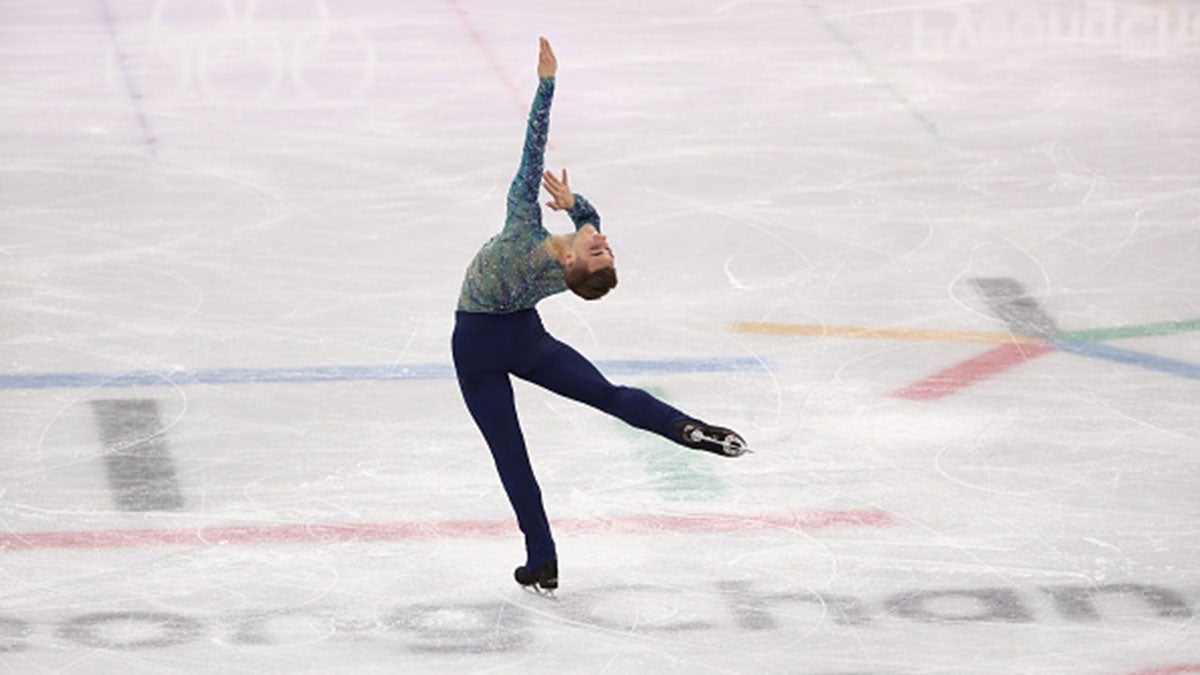
Reagan has since spoken out publicly about her struggles with body image, self-harm, and depression. She is surprised by the number of people who have told her about their own body image and mental health issues since she went public.
“I wish more people would, just for themselves, want to be happy and healthy and understand that it doesn’t have to be on your own.”
Miller often speaks with young people with the hope that his story will help others, especially those who do not excel in sports.
“It didn’t take winning a gold medal for me to love myself or appreciate the way that I looked,” he said. “It was just recognizing that there’s nothing wrong with looking a little different.”
Miller also wants people, especially youth, to know that having insecurities is OK.
“I have met supermodels. I have met professional athletes. I have met actors. I have met singers,” he said. “And I have realized over the years after having these really cool, fortunate experiences, that everyone has something about themselves that they don’t like. Every single person on the planet has something that they are insecure about or at one point in time were insecure about, so those insecurities are normal.”
Jeff Burtka is a freelance writer based in metro Detroit. You can read more of his work here.
Editor’s note: For the coming 2019-2020 academic year, the Global Sport Institute’s research theme will be “Sport and the body.” The Institute will conduct and fund research and host events that will explore a myriad of topics related to the body.

